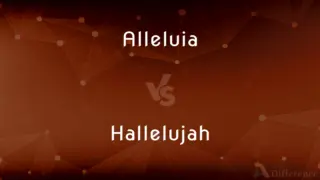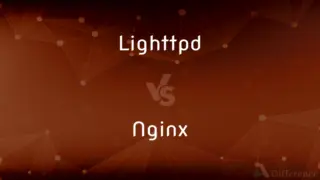Symbol vs. Legend — What's the Difference?

Difference Between Symbol and Legend
ADVERTISEMENT
Compare with Definitions
Symbol
A symbol is a mark, sign, or word that indicates, signifies, or is understood as representing an idea, object, or relationship. Symbols allow people to go beyond what is known or seen by creating linkages between otherwise very different concepts and experiences.
Legend
A legend is a genre of folklore that consists of a narrative featuring human actions perceived or believed both by teller and listeners to have taken place within human history. Narratives in this genre may demonstrate human values, and possess certain qualities that give the tale verisimilitude.
Symbol
A mark or character used as a conventional representation of an object, function, or process, e.g. the letter or letters standing for a chemical element or a character in musical notation
The chemical symbol for helium is He
The symbol r in Figure 5 represents a gene which is ineffective
Legend
An unverified story handed down from earlier times, especially one popularly believed to be historical.
Symbol
A thing that represents or stands for something else, especially a material object representing something abstract
The limousine was another symbol of his wealth and authority
ADVERTISEMENT
Legend
A body or collection of such stories.
Symbol
Symbolize.
Legend
See urban legend.
Symbol
Something that represents something else by association, resemblance, or convention, especially a material object used to represent something invisible
The lamb is a symbol of innocence.
Legend
One that inspires legends or achieves legendary fame
She is a legend in her own time.
Symbol
An instance that typifies a broader pattern or situation
His striking out to end the rally was a symbol of everything that had gone wrong with the team over the past month.
Legend
An inscription or title on an object, such as a coin.
Symbol
A printed or written sign used to represent an operation, element, quantity, quality, or relation, as in mathematics or music.
Legend
An explanatory caption accompanying an illustration.
Symbol
(Psychology) An object or image that an individual unconsciously uses to represent repressed thoughts, feelings, or impulses
A phallic symbol.
Legend
An explanatory table or list of the symbols appearing on a map or chart.
Symbol
A character or glyph representing an idea, concept or object.
$ is the symbol for dollars in the US and some other countries.
Chinese people use word symbols for writing.
Legend
An unrealistic story depicting past events.
Symbol
A thing considered the embodiment of a concept or object.
The lion is the symbol of courage; the lamb is the symbol of meekness or patience.
Legend
A story of unknown origin describing plausible but extraordinary past events.
The legend of Troy was discovered to have a historical basis.
Symbol
(linguistics) A type of noun whereby the form refers to the same entity independently of the context; a symbol arbitrarily denotes a referent. See also icon and index.
Legend
A plausible story set in the historical past, but whose historicity is uncertain.
The legend of Robin Hood
Symbol
A summary of a dogmatic statement of faith.
The Apostles, Nicene Creed and the confessional books of Protestantism, such as the Augsburg Confession of Lutheranism are considered symbols.
Legend
A story in which a kernel of truth is embellished to an unlikely degree.
The 1984 Rose Bowl prank has spawned many legends. Here's the real story.
Symbol
(crystallography) The numerical expression which defines a plane's position relative to the assumed axes.
Legend
A fabricated backstory for a spy, with associated documents and records.
According to his legend, he once worked for the Red Cross, spreading humanitarian aid in Africa.
Symbol
(obsolete) That which is thrown into a common fund; hence, an appointed or accustomed duty.
Legend
A person related to a legend or legends.
Symbol
(obsolete) Share; allotment.
Legend
A leading protagonist in a historical legend.
Achilles is a legend in Greek culture.
Symbol
(programming) An internal identifier used by a debugger to relate parts of the compiled program to the corresponding names in the source code.
Legend
A person with legend-like qualities, such as extraordinary accomplishment.
Michael Jordan stands as a legend in basketball.
Symbol
(telecommunications) A signalling event on a communications channel; a signal that cannot be further divided into meaningful information.
Legend
A key to the symbols and color codes on a map, chart, etc.
According to the legend on the map, that building is a school.
Symbol
To symbolize.
Legend
An inscription, motto, or title, especially one surrounding the field in a medal or coin, or placed upon a heraldic shield or beneath an engraving or illustration.
Symbol
A visible sign or representation of an idea; anything which suggests an idea or quality, or another thing, as by resemblance or by convention; an emblem; a representation; a type; a figure; as, the lion is the symbol of courage; the lamb is the symbol of meekness or patience.
A symbol is a sign included in the idea which it represents, e. g., an actual part chosen to represent the whole, or a lower form or species used as the representative of a higher in the same kind.
Legend
A musical composition set to a poetical story.
Symbol
Any character used to represent a quantity, an operation, a relation, or an abbreviation.
Legend
(naval) The design and specification of a vessel.
Symbol
An abstract or compendium of faith or doctrine; a creed, or a summary of the articles of religion.
Legend
To tell or narrate; to recount.
Symbol
That which is thrown into a common fund; hence, an appointed or accustomed duty.
They do their work in the days of peace . . . and come to pay their symbol in a war or in a plague.
Legend
That which is appointed to be read; especially, a chronicle or register of the lives of saints, formerly read at matins, and in the refectories of religious houses.
Symbol
Share; allotment.
The persons who are to be judged . . . shall all appear to receive their symbol.
Legend
A story respecting saints; especially, one of a marvelous nature.
Symbol
An abbreviation standing for the name of an element and consisting of the initial letter of the Latin or New Latin name, or sometimes of the initial letter with a following one; as, C for carbon, Na for sodium (Natrium), Fe for iron (Ferrum), Sn for tin (Stannum), Sb for antimony (Stibium), etc. See the list of names and symbols under Element.
Legend
Any wonderful story coming down from the past, but not verifiable by historical record; a myth; a fable.
And in this legend all that glorious deed Read, whilst you arm you.
Symbol
To symbolize.
Legend
An inscription, motto, or title, esp. one surrounding the field in a medal or coin, or placed upon an heraldic shield or beneath an engraving or illustration.
Symbol
An arbitrary sign (written or printed) that has acquired a conventional significance
Legend
To tell or narrate, as a legend.
Symbol
Something visible that by association or convention represents something else that is invisible;
The eagle is a symbol of the United States
Legend
A story about mythical or supernatural beings or events
Legend
Brief description accompanying an illustration
Share Your Discovery

Previous Comparison
Oleograph vs. Canvas
Next Comparison
Dimension vs. Volume















































